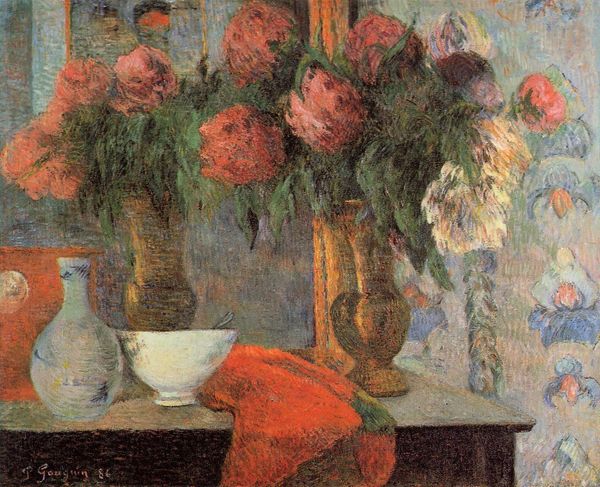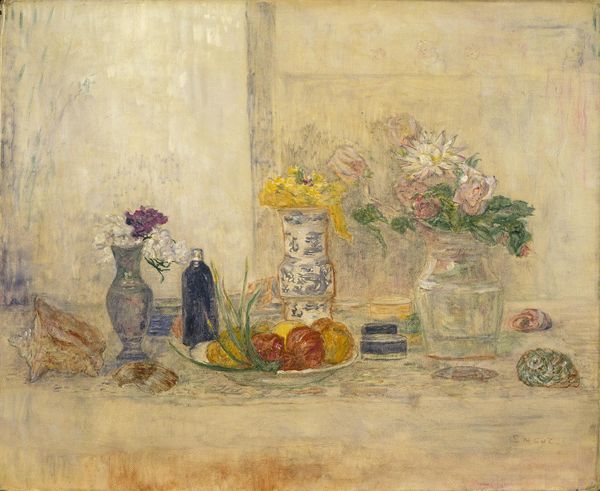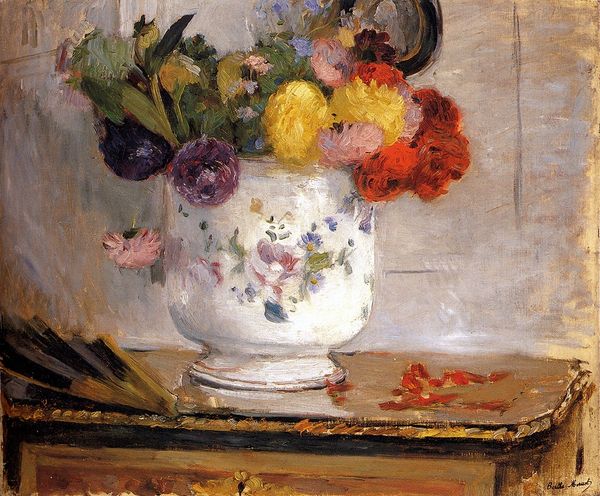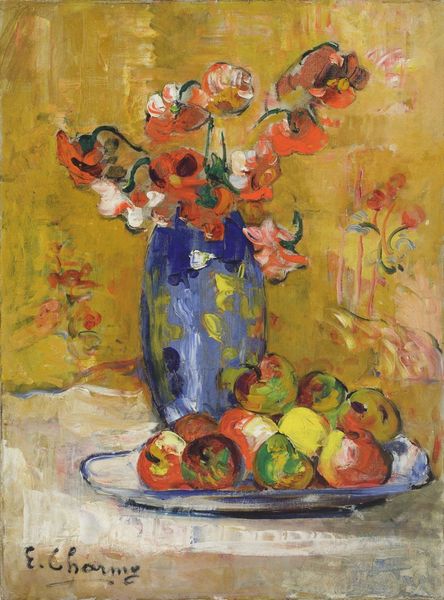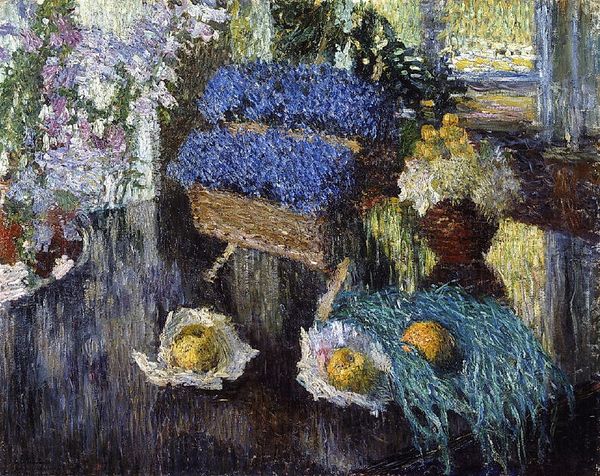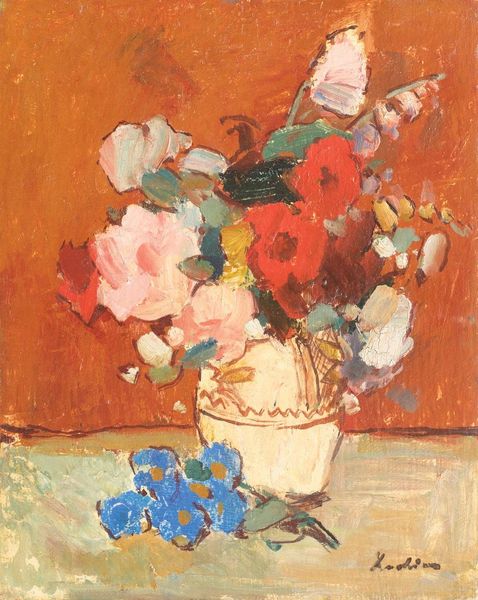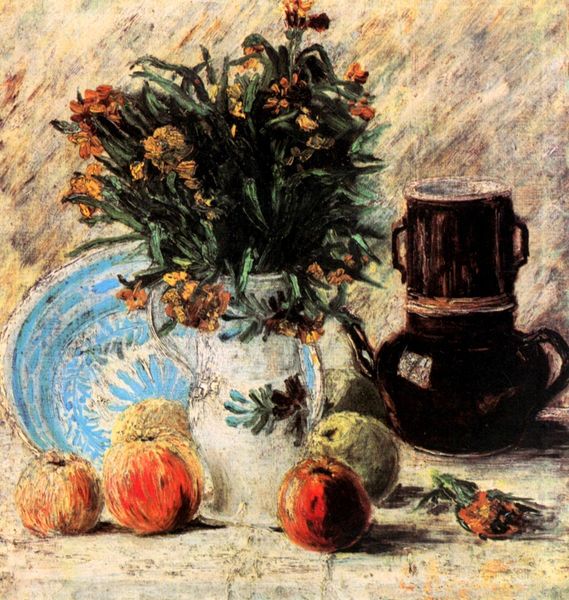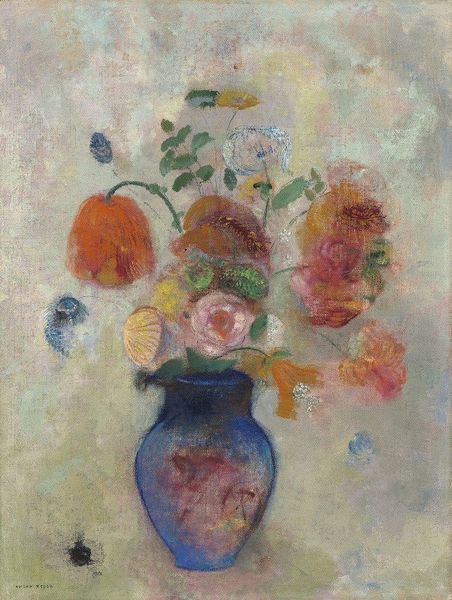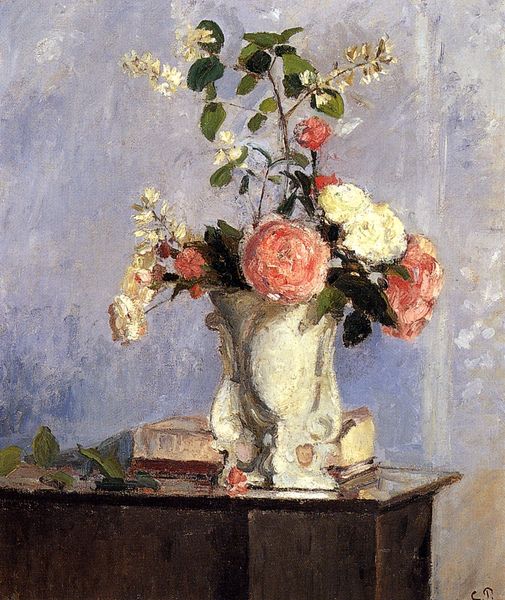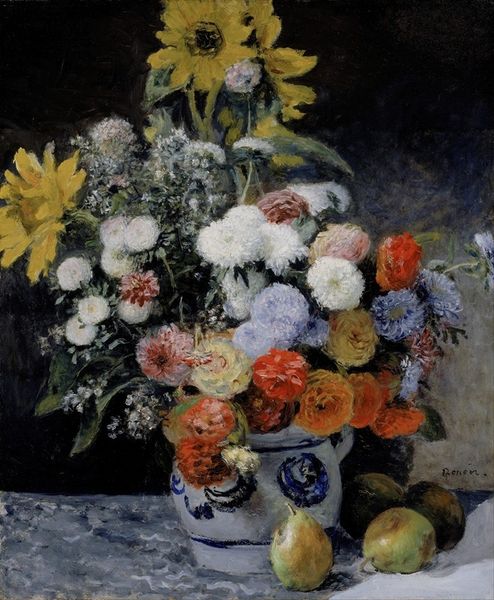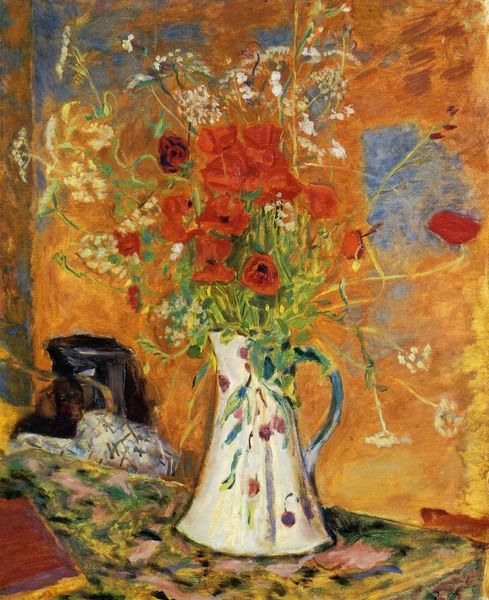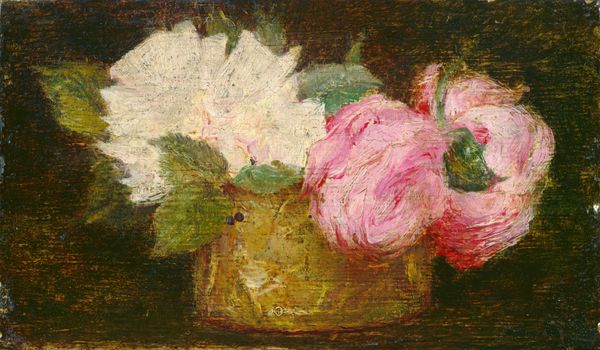
oil-paint, impasto
#
impressionism
#
oil-paint
#
oil painting
#
impasto
Copyright: Public domain
Editor: James Ensor's "Peaches," painted in 1890 using oil paints with an impasto technique. It’s a vibrant little still life. What catches my eye is how…unsettled it feels. The peaches look almost aggressively textured. What do you see in this piece, given your expertise in the history of art and its institutions? Curator: That unsettled feeling is interesting. It challenges the conventional reading of a still life, which were typically understood as displays of domestic harmony and prosperity. How does this seemingly 'aggressive' texturing of fruit fit into the broader societal picture of the late 19th century? Editor: I’m not sure! Curator: Think about Ensor's context: Belgium, a rapidly industrializing nation facing significant social inequalities. Traditional institutions like the church and monarchy were losing their grip. The loose, impasto brushwork and somewhat discordant colour choices could be interpreted as a challenge to the established order, a kind of visual rebellion against the polished surfaces of academic painting favored by the elites. The peaches, while seemingly innocuous, become a symbol of this social unease. They aren't just pretty things to look at, they are hinting at the rot beneath the surface. Editor: So, it's not *just* a still life, it's a commentary on the state of society! That's fascinating. Curator: Precisely! Ensor was very interested in exposing what he saw as the hypocrisy of the upper class, his approach using unconventional visual styles to subtly critique societal norms through painting, questioning the function of art and the politics of imagery itself. It also made the establishment re-think what could be called Art at the time, broadening those barriers in later generations. Editor: I'll definitely look at still life paintings differently from now on. Thanks for opening my eyes! Curator: And thank you for that fresh, instinctive perspective. Sometimes, art history can seem like an exploration, but that's never as fruitful as a new way of experiencing and understanding that same work.
Comments
No comments
Be the first to comment and join the conversation on the ultimate creative platform.
